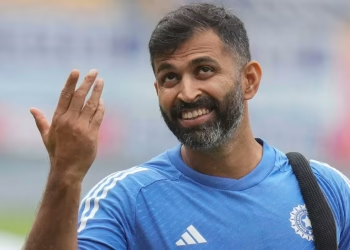Professional esports has matured beyond casual gaming into a structured industry with dedicated training facilities and systematic player development. Organizations now invest millions in academy programs, creating pathways from amateur play to professional competition. The sophistication of these programs rivals traditional sports academies, and their success rates have become so predictable that platforms like app 1xBet now offer markets on academy graduation rates and player placement statistics.
Table of Contents
The Academy Structure: From Recruitment to Professional Placement
Modern esports academies operate with military-like precision in their talent development approach. Esports talent development methodologies reveal the systematic nature of these institutions. The recruitment process alone involves multiple stages of evaluation, from mechanical skill assessment to psychological profiling.
Key components of successful academy programs include:
- Structured practice schedules — players train 8-12 hours daily with specific skill-building sessions
- Mental conditioning programs — psychological training to handle competition pressure and team dynamics
- Physical fitness regimens — contrary to stereotypes, top players maintain strict physical training schedules
- Educational components — business training, media relations, and financial literacy courses
- Team coordination workshops — communication drills and strategic planning sessions
The numbers speak for themselves. Team Liquid’s academy program boasts a 73% professional placement rate within two years. Cloud9’s system has produced 16 LCS-level players since 2019. These aren’t accidents — they’re the result of carefully calibrated development systems.
Measuring Success: The Data Behind Academy Performance
Academy success rates have become sophisticated enough to attract serious analytical attention. Research from competitive gaming development studies show measurable patterns in player development trajectories. Organizations track everything from reaction time improvements to strategic decision-making speed.
The most successful academies share common characteristics. They maintain strict player-to-coach ratios (typically 3:1), implement regular performance reviews every two weeks, and use data analytics to track individual improvement metrics. Gen.G’s academy, for instance, monitors over 200 performance indicators per player, creating detailed development profiles that predict professional readiness with 84% accuracy.
What’s particularly interesting is how different regions approach academy development. Korean academies emphasize technical perfection and individual mechanics. European programs focus on team coordination and strategic flexibility. North American academies blend both approaches while adding strong emphasis on content creation and personal branding.
The Business Model: Investment and Returns in Talent Development
Running an esports academy isn’t cheap. Top-tier facilities cost between $2-5 million annually to operate. This includes coaching staff salaries (experienced coaches command $150,000+ annually), facility costs, equipment, and player stipends. Yet organizations continue expanding their academy investments.
The return on investment comes through multiple channels. Successful player development creates valuable assets — professional players can be sold or loaned to other teams for significant fees. More importantly, academies serve as talent pipelines, reducing recruitment costs and ensuring cultural fit within organizations.
TSM’s academy program has generated over $3 million in player transfer fees since 2020. But the real value lies in the players who transition directly to their main roster. Academy-developed players show 40% better team integration scores compared to external recruits, and they typically require 60% less onboarding time.
The economic model works because the best academies don’t just train players — they develop complete professionals. Communication skills, media training, sponsor management, and business acumen are all part of the curriculum. This comprehensive approach produces players who can immediately contribute to team success both in-game and in business operations.
Academy programs have also created new career paths within esports. Coaching positions, analyst roles, and support staff opportunities have multiplied as organizations recognize the value of structured development. The industry now employs over 2,000 people directly in academy-related roles, from nutritionists to sports psychologists.
Looking ahead, the academy model continues evolving. Virtual reality training systems, AI-powered opponent simulation, and biometric performance monitoring are becoming standard tools. The organizations that adapt fastest to these technological advances will likely dominate future talent development markets.
The transformation from casual gaming to professional sport is complete. These academies represent the maturation of esports into a legitimate career path, complete with structured development, measurable outcomes, and professional standards that rival any traditional sport.
Read more: OnePlus Nord 5 Review: Snapdragon 8s Gen 3 Delivers Flagship Performance at Mid-Range Pricing







